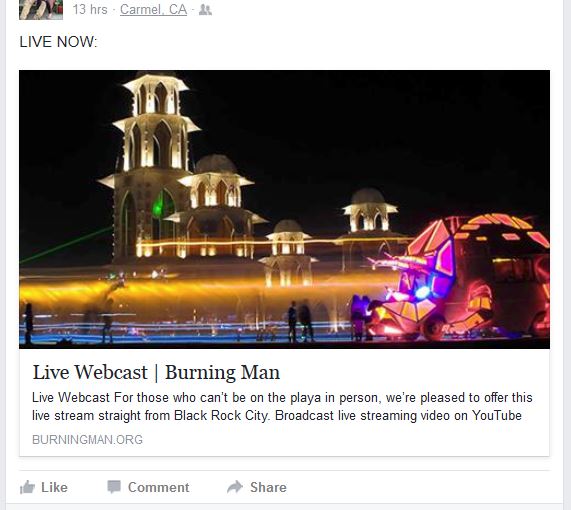There was a time when live-streaming video around the globe was reserved for mega-corporations and celebrities. But now social media giant Facebook has put this exciting tool into the hands of anyone and everyone via their site, giving users the ability to broadcast videos to a worldwide audience with a couple button taps.

Of course, as with anything new on the Internet, there’s an obvious learning curve to observe, but the possibilities are seemingly endless: not only can people post their latest up-to-the-second video feeds, but the feature is available for use on any device from desktops to tablets to smartphones and even drones. And given Facebook’s global reach, there’s little doubt this will greatly alter and enhance the way we communicate with each other and impact the sharing of information and entertainment.
Getting started with live streaming is truly snap, not hard to believe given that the site goes to great lengths to make things easy and intuitive. Click on the “New Status” button at the top of the iOS or Android app, hit the live broadcast button, enter in a brief description and tap “Go Live.” Your live stream will then appear within the newsfeeds of all your FB friends, who can not only watch in real time but also comment during your broadcast.
Of course, having the capability to live stream naturally comes with certain dos and don’ts: this is unscripted content feed after all, and the chances for abuse is pretty high. But by adhering to some common-sense etiquette, there’s no reason why everyone can’t leverage the tool for great things, whether it’s a non-profit trying to spread the word on its cause or a small e-commerce site seeking to spread their brand and convert views to dollars.
- Consider your content. What is your intent with the live stream, and what do you hope to accomplish? Make an outline with clear objectives and have some sort of plan regarding what you want to talk about or show viewers. For most of those on Facebook Live, a plan involves multiple broadcasts and, hopefully, returning views. So if your video is dull and routine, chances are no one will watch and no one will return for subsequent broadcasts.
- Start small. First-time Facebook Live posters are going to make mistakes: it’s inevitable. So begin with a group of just close friends, supporters or clients: basically people you trust. Then ask for their feedback immediately: was the lighting okay? Did they feel engaged with your message? Was the quality of the video and audio decent? Their responses can help you tweak your broadcasts and ensure that you’re on the right track to producing content more and more people will want to see.
- Be specific with your topics. Rather than trying to cover a wide range of conversational themes, hone your broadcasts by focusing on a particular subject. This will foster more discussion among viewers. Investigate topics that are currently trending in your area of interest: peruse other social media sites such as Twitter and see what’s hot right now.
- Give viewers the heads up. Let them know when you’re going live, and try to keep your broadcasting to some sort of regular schedule. This will help viewers plan ahead and tune in, rather than expect them to just stumble upon your live feeds at random moments. Remember this: you want people to show up for your broadcast and be engaged, and giving advanced warning is really the only way to guarantee this.
- Be ready to respond to those commenting. You’ll be able to read responses to your video in real time, and this gives you the ability to have a genuine conversation with viewers. Take advantage of this unique opportunity and read and reply to their comments.
- Lastly, remember again that this is live streaming video. That means you’ll need decent bandwidth. If possible use a dedicated Wi-Fi connection and do a test run at the location from which you plan to broadcast.


